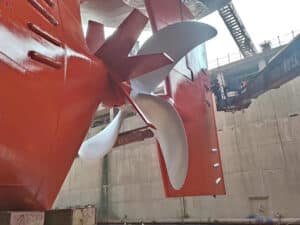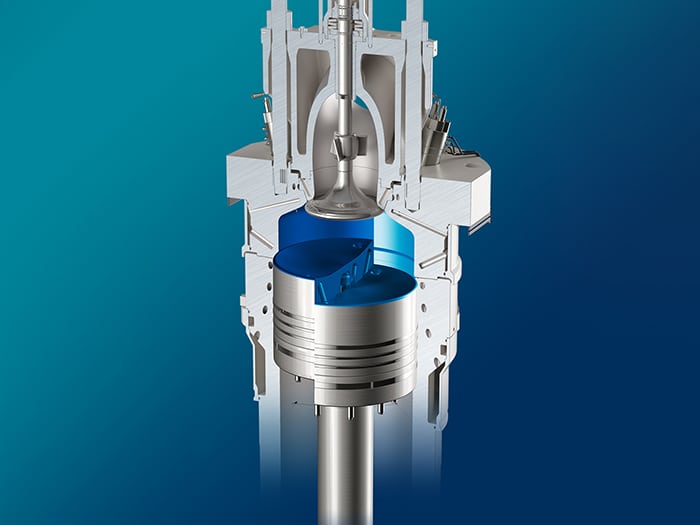
NYK Lines duo will be first ships with variable compression ratio engines
Written by Nick Blenkey
Image: WinGD
Two new LNG dual-fueled vessels being built for NYK Line will be the first with two-stroke engines featuring the variable compression ratio (VCR) technology announced by Swiss-headquartered engine developer WinGD back in June. At that time, the CSSC Group member company said that the VCR technology eliminates the need for ship operators to compromise on optimal combustion when using multiple fuels.
The NYK Line newbuilds, a 95,000 DWT bulk carrier being built at Oshima Shipbuilding Co and a 7,000 CEU pure car and truck carrier (PCTC) being built at Shin Kurushima Dockyard, will be the first two-stroke powered vessels that can dynamically optimize combustion depending on the fuel being used – delivering improved emissions, fuel economy and fuel flexibility.
WinGD introduced the variable compression ratio technology after more than a decade of co-development with Mitsui E&S DU (MESDU). The simple hydraulic solution mounted on the piston crosshead represents a breakthrough in two-stroke engine design as the first concept enabling compression ratio to be adjusted, delivering significant greenhouse gas emissions reductions in both diesel and gas modes (around 6% and 3% respectively, says WinGD). Running in diesel mode, this equates to a saving of around 1,555 tonnes of CO2e a year.
“NYK Line has long been a valued development partner, entrusting WinGD with innovative, sustainability driven projects, including recently our first system integration project,” said WinGD general manager application & technical sales, Marcel Ott. “Strong partnerships make sustainable ships, and it is fitting that this collaboration has now resulted in the first deployments of VCR, a technology that we believe can have a huge impact on performance of our X DF LNG-fueled engines.”
The first reference, the Oshima-built bulk carrier, is expected to be delivered in 2025. It will be powered by a WinGD 6X62DF-2.1 engine. The PCTC is expected to be delivered in 2026, powered by a WinGD 7X62DF-S2.0 engine.
The PCTC vessel will mark the first deployment of WinGD’s new 62-bore short-stroke engine. It will also be among the first to feature on-engine iCER – a compact version of the X-DF2.0 technology that offers further reductions in fuel consumption and emissions while assuring Tier III NOx compliance in both gas and diesel modes.
VCR technology is currently available as an option for 62- and 72-bore X-DF engines and has no impact on engine footprint and installation requirements.




